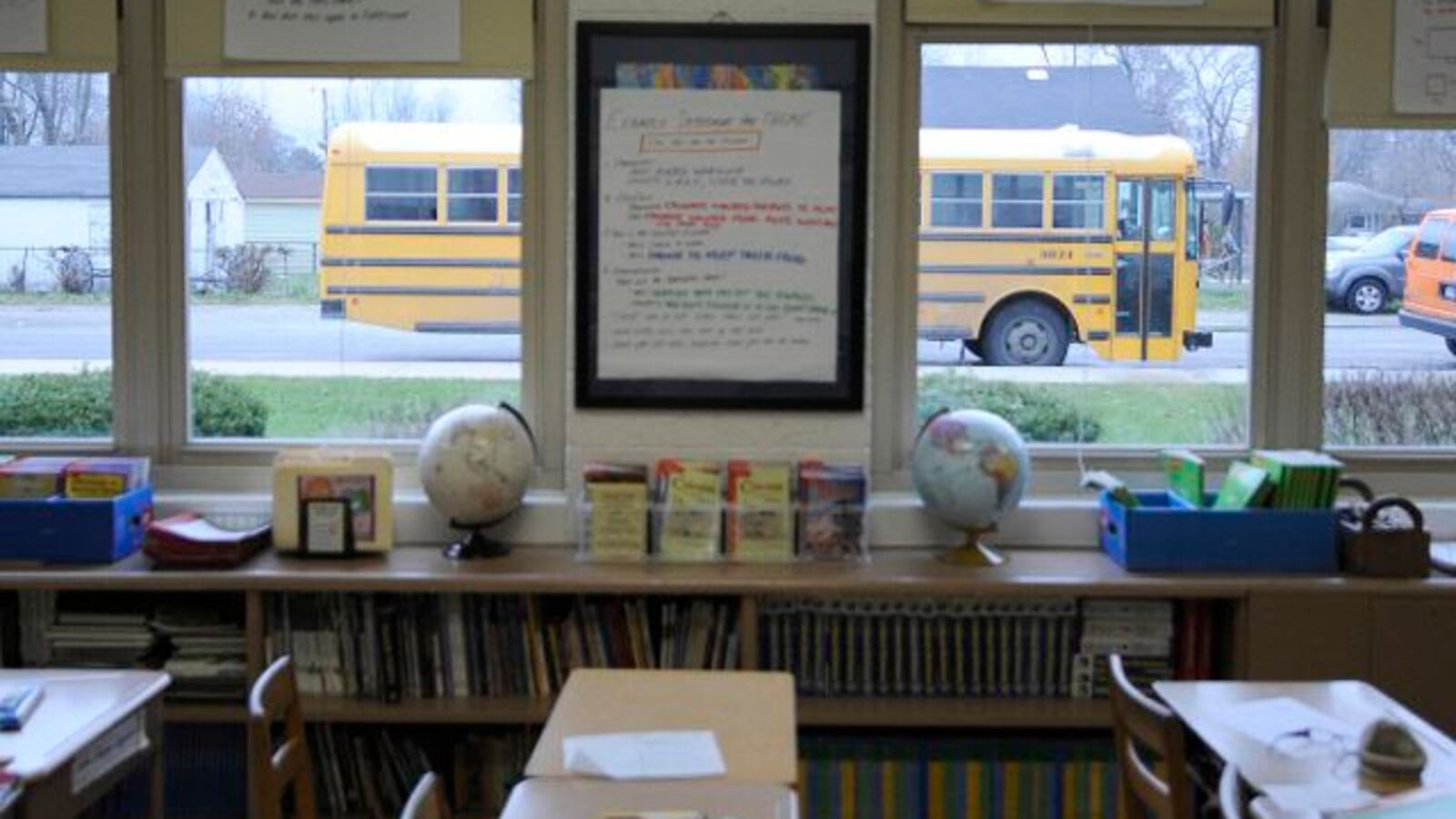Indiana’s reliance on sales tax as a critical piece of its education funding system isn’t doing any favors for schools, according to a report from a national credit rating firm.
The report, released Monday by Standard and Poor’s, says that not only has an growing income gap nationally between the wealthiest and poorest Americans led to slower economic growth, it could also lead to a drop in the revenue the state collects in taxes. That means Indiana could see less and less state money coming in from sales tax and have less to to pay for education.
Indiana is unusual in how it gathers tax dollars used to fund education.
States and school districts typically fill their general funds each year with money residents pay from some combination income tax, sales tax and property tax. A 2009 change in the way Indiana funds schools means property tax money no longer flows into its general fund. Instead, schools’ day-to-day operations primarily are funded with sales and income taxes. Collections from sales and income tax tend to fall and rise more dramatically with swings in the economy than property taxes.
But a key state legislator said in response to the report that Indiana might not be done tinkering with its school funding method. Indianapolis Public Schools Superintendent Lewis Ferebee said he also expected more debate about how to pay for schools when the legislature returns to work on the 2016-17 budget beginning in January.
“I expect this legislative session will be heavy on school funding,” Ferebee said. “I appreciate the willingness to look at other options.”
When the economy dips, it causes workers to be laid off and the state quickly begins collecting less income tax, which is tied to Hoosiers’ pay checks. Consumers also spend less in a recession on goods and services, leading to less sales tax collected by the state. Changes in property tax collections, which are based off the assessed value of a home or other real estate, happen more slowly. Even when a home is sold or enters into foreclosure, the property tax are often still paid, so the state still receives that revenue.
But Derek Redelman, vice president of the Indiana Chamber of Commerce, said it’s only fair to fund schools the way other parts of government are funded, even if it means they aren’t shielded from dramatic changes in the economy.
“Schools were one of the government entities that were completely protected from changes in the economy, and I don’t know how that’s justified,” Redelman said. “The property tax method said, ‘We don’t care how much money you have to spend, we don’t care if you’re employed. If you own a house, you’re going to pay anyway.'”
Ferebee, who came to Indiana last year after spending most of his career as a school administrator in North Carolina, said even the more stable property tax system that state uses, and Indiana used in the past, has disadvantages. Funding based on local property tax can result in rich schools for wealthy communities and poor schools for communities with fewer high earners.
That’s not fair either, he said.
“Property tax is a lot more consistent and predictable but with property taxes there is less control over the high and low poverty areas,” Ferebee said. “It creates a divide.”
The state’s current funding system has resulted in a steady drop in state aid to IPS since 2009. But if Indiana was completely on a property tax-based system, it might actually hurt IPS more because the portion of the city that includes most of IPS looks very different than the rest of school districts.
“In Center Township, there’s not a lot of residential property and lots of tax exempt properties,” he said. “We wouldn’t generate the same revenue.”
The Standard and Poor’s report found that a measure of volatility in state taxes in Indiana has doubled since 2009, which means the amount of money states collect each year from income and sales taxes varies more widely than other states. When state revenue is more unpredictable, so is school funding.
Indiana was identified in the report as one of the 10 most sales tax-dependent states in the country. Of the states listed, Indiana had the second lowest average annual state tax revenue growth at 3.2 percent since 2009. Only Florida was worse, with a growth rate of 1.9 percent in the same time period.
State Rep. Todd Huston, R-Fishers, noted that income and sales tax are not the only funding sources for the state’s and the education system. It still relies on property tax dollars to a lesser extent to pay for building projects and busing.
Huston, who is on the both Indiana House’s education committee and budget-making ways and means committee, said a discussion about how school funding should work in Indiana is ongoing.
“This isn’t a static conversation,” Huston said. “We’ll always continue to look at what the appropriate balance is, and what the revenue sources are and what we think is the right long-term solution to fund schools in the state of Indiana.”
The best way to improve this income gap situation might be through education itself, he said.
“We control some of this by how well we educate our kids,” Huston said. “If we continue to improve and get more kids across the finish line, that’s going to help kids become more successful economically, and that’s how you really close the income gap.”


